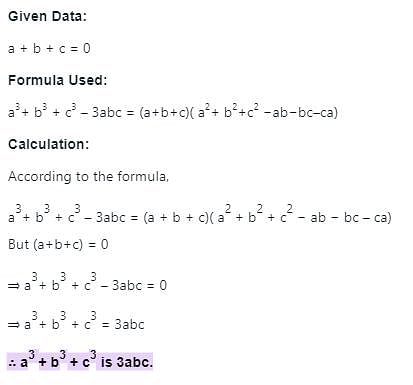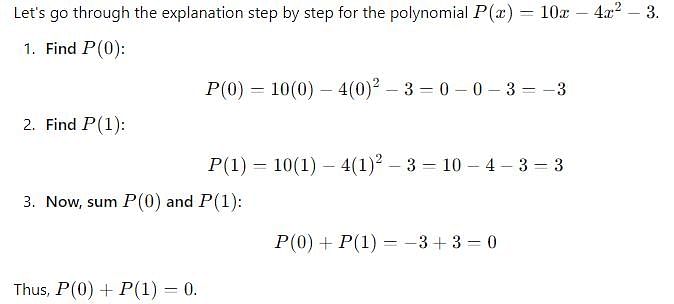Class 9 Exam > Class 9 Tests > Mathematics (Maths) Class 9 > Test: Polynomials - 2 - Class 9 MCQ
Test: Polynomials - 2 - Class 9 MCQ
Test Description
25 Questions MCQ Test Mathematics (Maths) Class 9 - Test: Polynomials - 2
Test: Polynomials - 2 for Class 9 2025 is part of Mathematics (Maths) Class 9 preparation. The Test: Polynomials - 2 questions and answers have been
prepared according to the Class 9 exam syllabus.The Test: Polynomials - 2 MCQs are made for Class 9 2025 Exam. Find important
definitions, questions, notes, meanings, examples, exercises, MCQs and online tests for Test: Polynomials - 2 below.
Solutions of Test: Polynomials - 2 questions in English are available as part of our Mathematics (Maths) Class 9 for Class 9 & Test: Polynomials - 2 solutions in
Hindi for Mathematics (Maths) Class 9 course. Download more important topics, notes, lectures and mock
test series for Class 9 Exam by signing up for free. Attempt Test: Polynomials - 2 | 25 questions in 25 minutes | Mock test for Class 9 preparation | Free important questions MCQ to study Mathematics (Maths) Class 9 for Class 9 Exam | Download free PDF with solutions
Detailed Solution for Test: Polynomials - 2 - Question 1
Detailed Solution for Test: Polynomials - 2 - Question 2
Test: Polynomials - 2 - Question 3
A polynomial containing two nonzero terms is called a ________.
Detailed Solution for Test: Polynomials - 2 - Question 3
Detailed Solution for Test: Polynomials - 2 - Question 4
Detailed Solution for Test: Polynomials - 2 - Question 5
Detailed Solution for Test: Polynomials - 2 - Question 6
Detailed Solution for Test: Polynomials - 2 - Question 7
Test: Polynomials - 2 - Question 8
A polynomial containing three nonzero terms is called a ________.
Detailed Solution for Test: Polynomials - 2 - Question 9
Detailed Solution for Test: Polynomials - 2 - Question 10
Test: Polynomials - 2 - Question 11
If one of the factor of x2 + x – 20 is (x + 5). Find the other
Detailed Solution for Test: Polynomials - 2 - Question 12
Detailed Solution for Test: Polynomials - 2 - Question 14
Detailed Solution for Test: Polynomials - 2 - Question 16
Test: Polynomials - 2 - Question 18
The remainder when the polynomial x4+2x3−3x2+x−1 is divided by (x−2) is
Test: Polynomials - 2 - Question 19
The remainder obtained when the polynomial p(x) is divided by (b – ax) is
Detailed Solution for Test: Polynomials - 2 - Question 19
Detailed Solution for Test: Polynomials - 2 - Question 20
Detailed Solution for Test: Polynomials - 2 - Question 21
Detailed Solution for Test: Polynomials - 2 - Question 22
Test: Polynomials - 2 - Question 23
If the polynomial x3−6x2+ax+3 leaves a remainder 7 when divided by (x−1), then the value of ‘a’ is
Detailed Solution for Test: Polynomials - 2 - Question 25
|
44 videos|412 docs|54 tests
|
Information about Test: Polynomials - 2 Page
In this test you can find the Exam questions for Test: Polynomials - 2 solved & explained in the simplest way possible.
Besides giving Questions and answers for Test: Polynomials - 2, EduRev gives you an ample number of Online tests for practice





 are the factors of px2 + 5x + r, then
are the factors of px2 + 5x + r, then
















